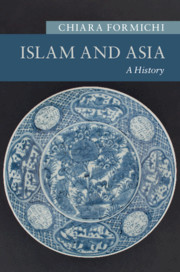Book contents
- Islam and Asia
- New Approaches to Asian History
- Islam and Asia
- Copyright page
- Dedication
- Contents
- Figures
- Maps
- Boxes
- Sources
- Preface
- Acknowledgments
- Note on Transliteration and Foreign Terms
- Maps
- Introduction
- 1 Islam across the Oxus (Seventh to Seventeenth Centuries)
- 2 Becoming Muslim (Seventh to Eighteenth Centuries)
- 3 Networks and Renewal (Thirteenth to Nineteenth Centuries)
- 4 Pan-Islamism and Nationalism (Nineteenth and Twentieth Centuries)
- 5 Muslims in the Nation-State (1940s to 1960s)
- 6 New Imaginations of Piety (1960s to 1990s)
- 7 Islam as Resistance
- 8 De-centering Islamic Authority
- 9 Studying Asia and Islam
- Glossary
- Notes
- Index
- New Approaches to Asian History
- References
4 - Pan-Islamism and Nationalism (Nineteenth and Twentieth Centuries)
Published online by Cambridge University Press: 16 April 2020
- Islam and Asia
- New Approaches to Asian History
- Islam and Asia
- Copyright page
- Dedication
- Contents
- Figures
- Maps
- Boxes
- Sources
- Preface
- Acknowledgments
- Note on Transliteration and Foreign Terms
- Maps
- Introduction
- 1 Islam across the Oxus (Seventh to Seventeenth Centuries)
- 2 Becoming Muslim (Seventh to Eighteenth Centuries)
- 3 Networks and Renewal (Thirteenth to Nineteenth Centuries)
- 4 Pan-Islamism and Nationalism (Nineteenth and Twentieth Centuries)
- 5 Muslims in the Nation-State (1940s to 1960s)
- 6 New Imaginations of Piety (1960s to 1990s)
- 7 Islam as Resistance
- 8 De-centering Islamic Authority
- 9 Studying Asia and Islam
- Glossary
- Notes
- Index
- New Approaches to Asian History
- References
Summary
The rapid technological advances which took place in the second half of the 19th century – most notably steam shipping, the opening of the Suez Canal, and printing -- allowed for increased exchanges and communication across Islamized Asia. The intellectual vitality that enveloped Cairo and Mecca reached many across Asia, whether directly through travel or indirectly through publications. As World War One brought about the collapse of the Ottoman Empire and the end of the Caliphate in 1924, at the same time reinforcing European colonial presence, Muslim communities world-wide became involved with pan-Islamism, whether as a reflection of their interest in the resurgence of a caliphate, or as a strategic component of their anti-colonial efforts, further reinforcing the sense of community and belonging. This chapter follows the impact of the Caliphal crisis across Asia with a focus on the Netherlands East Indies, British India and Soviet Central Asia, as Muslims in these locales became main initiators of forums to discuss the future of the Caliphate and came to embrace pan-Islamism as a rallying point to achieve independence, even though their frames were largely shaped by local understandings and experiences of culture, religion and politics. [193]
Keywords
- Type
- Chapter
- Information
- Islam and AsiaA History, pp. 104 - 141Publisher: Cambridge University PressPrint publication year: 2020

